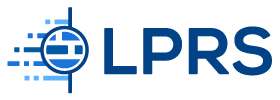Yay or Nay: Free Equipment with a Minimum Purchase of Disposables?
When a vendor offers equipment for free, pay attention to the fine print. In the current world of COVID and with significant changes made to the accounting standards relating to how equipment leases are recorded on the balance sheet, many lessors have become creative with the terms and conditions of their lease agreements. One recent trend we have observed is the resurgence of reagent agreements which offer desired equipment “at no cost,” with a long-term commitment of a minimum purchase of reagents or disposables.
A few quick things to consider before we go into a bit more detail:
- Are we really getting equipment for “free?” If not, how much of the payment applies to the equipment?
- Was this our idea or the vendor’s idea? Are the vendors pushing to circumvent our standard capital approval process?
- How do we account for this contract? What is the additional administrative burden of this approach?
What Is a Reagent/Disposable Agreement?
A reagent or disposable agreement is typically a 3-5-year commitment to purchase a minimum amount of disposables (test kits, pencils, pumps, needles, catheters, etc.). Equipment, software, and services are often added into the agreement, often offered “at no additional cost.” If the lessee uses fewer disposables than initially agreed upon, they typically still need to pay the contract minimums. If the lessee uses more than expected, monthly or annual “true-ups” normally occur to adjust the payment. Title to any leased equipment often transfers to the client at the end of the agreement term and after all payments have been made.
These types of agreements are considered embedded leases, as they lump together equipment (right-of-use assets) and non-equipment components. Embedded leases are some of the most complex agreements to decipher when it comes time to complying with the new accounting rules.
Lease Accounting Change
Under the updated GASB 87 and ASC 842 guidelines, it is imperative to understand the breakdown of the total cost of the agreement: how much you are paying for the equipment, how much for the software, and how much for any services or disposables.
GASB 87 states that lessees should account for the lease (equipment) and non-lease (non-equipment) components of a lease as separate contracts. If determining a best estimate is not practicable, multiple components in a lease contract should be accounted for as a single lease unit. The burden falls upon the lessee to disaggregate these components.
In the past, under ASC 842, lessees have typically treated the entire agreement as an operating expense. While the new guidelines do not require separate contracts for each component, you still need to disaggregate the costs and record the equipment portion of the lease on the balance sheet.
For many lessees, this is an onerous task to execute. The nature of reagent agreements and the vague contract terms can even make it impossible to determine the initial lease value recording.
What Should I Do?
We always recommend that you negotiate the cost of the equipment separately from the reagents, and then either pay cash or place the equipment on a true equipment lease, which becomes a right-of-use asset on the balance sheet. While this option may sound more costly than getting it “for free” with a minimum purchase commitment, it is usually the better financial choice in the long run.
Next, sign a separate agreement for services and software. There should be no change in these costs, and this will allow you to track these expenses separately.
Lastly, pay for reagents or disposables as used, or on a 12-month rolling agreement. It allows for consumables to be easily separated from right-of-use assets, and it also gives your organization the flexibility to make short-term adjustments to any significant changes in the volume without any penalties.
